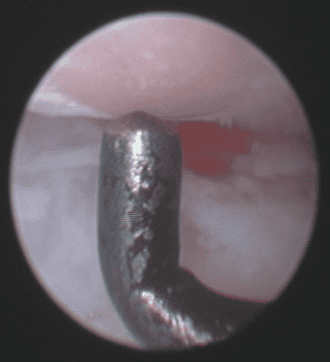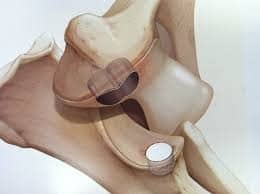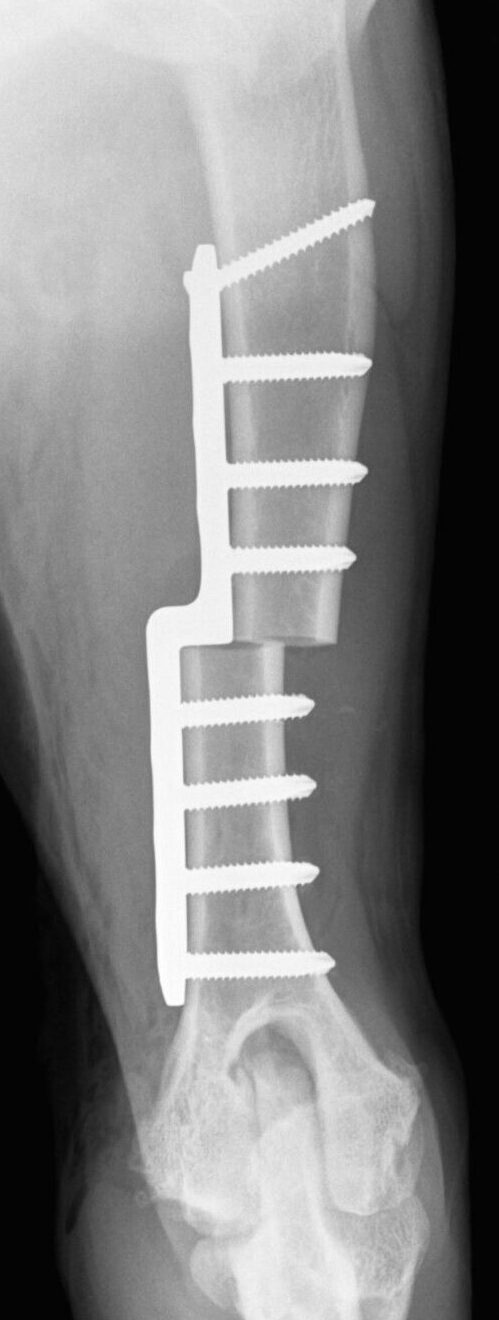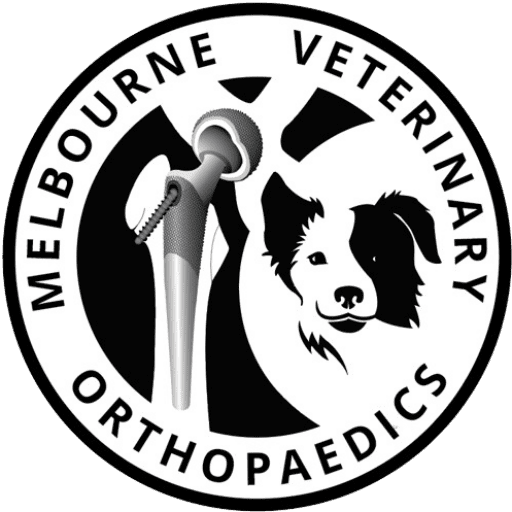Elbow dysplasia
Elbow dysplasia is a common orthopedic condition in dogs, particularly in larger breeds, where there is a malformation or abnormal development of the elbow joint. This can lead to arthritis, pain, and impaired mobility. Here’s a detailed overview of elbow dysplasia:
Causes of elbow dysplasia
Elbow dysplasia is a complex condition influenced by genetic, developmental, and environmental factors. It encompasses several specific disorders:
Fragmented medial coronoid process (FMCP)
- Description: A piece of bone or cartilage in the elbow joint becomes detached or fragments, leading to joint instability and arthritis.
- Cause: Often results from abnormal development of the medial coronoid process of the ulna bone.
Osteochondritis dissecans (OCD)
- Description: A condition where a segment of cartilage on the surface of the elbow joint becomes detached or fails to form properly.
- Cause: Caused by abnormal development of the cartilage and bone.
Elbow joint incongruity
- Description: Misalignment between the bones of the elbow joint, leading to abnormal wear and tear.
- Cause: Results from differences in the growth rates of the radius and ulna bones.
Ununited anconeal process (UAP)
- Description: A condition where the anconeal process of the ulna fails to fuse with the ulna bone, leading to joint instability.
- Cause: Abnormal growth or failure of normal fusion during development.
Symptoms of elbow dysplasia
- Lameness: Intermittent or persistent lameness in the front leg, often worsening after exercise.
- Pain: Pain on palpation of the elbow joint or during movement.
- Swelling: Swelling around the elbow joint due to inflammation or arthritis.
- Reduced range of motion: Decreased ability to fully extend or flex the elbow joint.
- Abnormal gait: Dogs may exhibit an altered gait or favor one leg.
Diagnosis
- Physical examination: Veterinarians will assess the dog’s gait, palpate the elbow joint for signs of pain or swelling, and check for decreased range of motion.
- Imaging: X-rays are commonly used to diagnose elbow dysplasia and evaluate the severity of joint changes. Advanced imaging like CT (Computed Tomography) or MRI (Magnetic Resonance Imaging) may be used for detailed assessment.
Treatment options
Conservative management
- Medications: Pain relief and anti-inflammatory drugs (e.g., NSAIDs) to manage pain and inflammation.
- Weight management: Maintaining a healthy weight to reduce stress on the joints.
- Physical therapy: Exercises and therapies to improve joint function and strength.
- Joint supplements: Nutritional supplements like glucosamine and chondroitin to support joint health.
Surgical treatment
Surgery may be recommended for more severe cases or when conservative treatment is insufficient:
- Arthroscopy: A minimally invasive procedure to remove fragmented cartilage or bone and clean the joint.

athroscopy arthritis
Dr Chris performing elbow arthroscopy surgery on a Labrador

- Arthrotomy: A more invasive surgery to directly access and repair the joint.
- Osteotomy: Surgical reshaping of the bones to correct alignment issues and reduce joint stress.

X-ray with bone plate osteotomy
- Joint replacement: In severe cases, replacing the elbow joint with an artificial implant may be considered.
Post-surgical care
- Restricted activity: Limiting movement and activity to allow proper healing.
- Rehabilitation: Physical therapy to restore joint function and strengthen muscles.
- Pain management: Continued use of pain relief medications as prescribed.
10 days post CUE
6 weeks post CUE
Prognosis
- Mild cases: With appropriate management, dogs with mild elbow dysplasia may experience significant improvement in symptoms and quality of life.
- Severe cases: More severe cases may require ongoing management and may have a variable prognosis depending on the extent of joint damage and response to treatment.
Prevention
- Selective breeding: Avoiding breeding dogs with known elbow dysplasia to reduce the incidence in future generations.
- Maintaining a healthy weight: Preventing obesity to reduce joint stress.
- Regular exercise: Providing moderate exercise to maintain joint health and avoid excessive stress.
Elbow dysplasia can significantly impact a dog’s quality of life, but with prompt diagnosis and appropriate treatment, many dogs can lead active, comfortable lives. If you suspect your dog may have elbow dysplasia, consulting with a veterinarian or a veterinary orthopedic specialist can help determine the best course of action.
